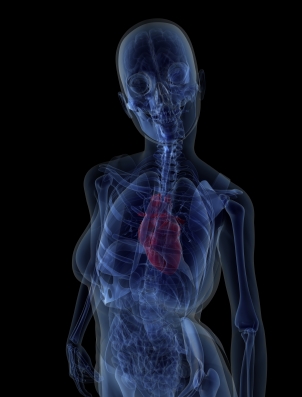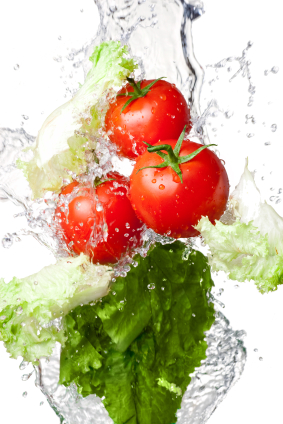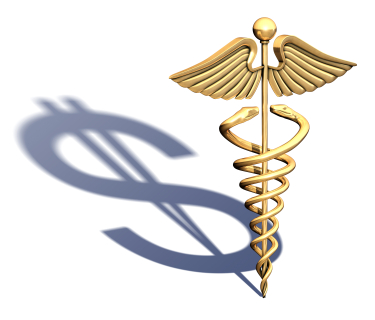Heart disease and bone health. Is there a link?
It’s crazy, right? Not only do we have to worry about an increased risk of developing heart disease and osteoporosis and related fractures as we age, but it now appears that the two may be linked. In fact, in a study that will be published early next year in the journal Bone, researcher have found that an increased risk of fracture risk is associated with an increased risk of heart and related illnesses.
The findings, which are based on scientifically verified fracture and cardiovascular measures, show that among more than 300 healthy perimenopausal and post menopausal women who had the greatest likelihood for developing heart disease were 5.4 tines more likely to have a higher risk of a major fracture due to osteoporosis and bone loss, and 3 times more likely to have a higher hip fracture risk than women in the lower heart disease risk categories. This likelihood remained even after adjusting for factors such as years since beginning menopause, BMI, smoking and alcohol use, history of HRT use and level of physical activity.
The researchers acknowledge that although aging has been associated with both of these diseases, the link between the two cannot be explained by age alone.Indeed, other studies have shown that women with high cholesterol levels and other blood fat issues have lower bone mineral density measure. While more work needs to be done, the implication is clear: some of the many issues we potentially face as we age may be linked, especially among women. The message is pretty clear as well: take care of your bones and your heart benefits and visa versa.
Read MoreWednesday Bubble: Eating your way through the ‘pause
I’ve written a lot about diet and maintaining a healthy weight , as well as impact on overall health as you age. And I will continue to do so as long as Flashfree is published. However, I have not written much on diet and how it affects symptoms, mostly because the evidence is pretty scant in that regard. Still, it has come up in conversations repeatedly and I feel that it’s time to at least broach the topic, especially since I discovered Dr. Akiko Sugahara, a Tokyo-based nutrition, anti-aging and women’s health specialist and her book, Menopause Recipes for Health and Beauty.
When it comes to maintaining health, obtaining minerals and vitamins through dietary sources is always preferable although not always possible. And while I cannot vouch for anything that Dr. Sugahara has shared in her book, her publicist did reach out with an offer to let me share a few pages here. Draw your own conclusions; we do know that not all soy products are created equal, and that isoflavone benefits may vary as well. Still, Dr. Sughara’s message is health comes first, which is why I chose this particular section to reprint in part. Please note that in her ebook, Dr. Sughara actually provides 10 ideas, which I have condensed for space purposes. If you want to read more, do download her book on her Facebook page.
Thank you Dr. Sughara, for providing your words to this post.
A deterioration in your physical condition during menopause renders you more vulnerable mentally. In this section, we present concrete ideas that will help you to manage menopause skillfully and improve your physical and mental health.
Taking a closer look at your everyday diet and identifying the problems.
Food preparation at home can sometimes fall below standard once the children have grown up. Before you know it, you might find yourself snacking instead of eating proper meals, eating lots of precooked meals and instant foods from your local supermarket or eating out more than you should. Where your diet is concerned, it is well worth making that extra effort for the sake of your own health and that of your family.
To identify potential problem areas, let’s first itemize your food balance.
Fermented soybean products more effective than supplements
The effectiveness of isoflavone in alleviating menopausal disorders is often discussed on television, and the link between soybeans and isoflavone is now common knowledge. Daily consumption of raw tofu, dried tofu, fermented soybeans, boiled beans or other soybean products is essential in treating and preventing menopausal disorders. Soybean milk, for example, is a convenient source of such also chill your body somewhat, so it is best consumed as an ingredient in stews and other hot dishes. Fermented foods, such as miso and vinegar, are more readily absorbed by the body and therefore provide isoflavone with a stronger effect.
Constipation relief as the basis for menopause relief
Many women with severe menopausal symptoms suffer from constipation. This condition also renders its sufferers more sensitive to the cold, often contaminating the blood and preventing it from flowing smoothly. This in turn reduces the amount of oxygen reaching the brain, making you absentminded and unable to organize your thoughts to get things done. Curing constipation therefore restores the blood flow to your extremities, bringing back the warmth to your hands and feet. The most effective cure for constipation is a diet of foods rich in isoflavone and polyphenols and especially dietary fibre, and sprouted brown rice is a prime example of these. Be wary of long-term use of medicinal laxatives, since they cause body chills that are felt deep inside your body.
Combating obesity with foods in 5 colours
Menopause is often accompanied by weight gain. Overeating to console loneliness is a primary cause, and a healthy digestive system will readily convert any excess intake into fat. This often results in a shortage of essential B- group vitamins, which promote complete combustion of nutrients and improve rain function, making it difficult to burn stored body fat. To combat weight gain, you should reduce your consumption of sweets and fruit and increase your consumption of stews made from as many as possible of the ingredients in the five basic colours. If you are susceptible to weight gain, then a staple of sprouted brown rice and wholegrain bread and an appropriate amount of exercise are recommended. This alone should eliminate obesity, helping menopausal symptoms to disappear naturally.
Dried foods effective for chills and abdominal ptosis
Many women who suffer from chills also have abdominal ptosis, or drooping of the viscera. This condition causes a deterioration in the secretion of gastric acid, preventing the essential absorption of iron and copper. It also causes the stomach to become bloated, so fatty foods lose their taste, and at the same time it restricts the consumption of plain foods. Consequently, some women skip breakfast or lunch or eat too little generally, resulting in a diet deficient in protein, iron and vitamins. To make things worse, the greater sensitivity to the cold that accompanies this condition can cause insomnia. The solution is to eat lots of shellfish, prunes and other dried fruits, cooked foods with iron and copper-rich whole-fish dishes and fried liver and vegetables. To compensate for the reduced amount of stomach acid, perhaps it would be a good idea to also eat foods containing vinegar and hot Chinese-style dishes with flavoured vinegar or to use pickled Japanese apricots in your cooking.
Idea 5: Combating osteoporosis with dried foods and fermented foods
Female hormones strengthen the bones to mitigate the effects of bone aging. As the secretion of female hormones declines, more bone cells are destroyed than are produced, and osteoporosis soon sets in, leaving the bones thinner and more porous and brittle. One way of dealing with osteoporosis is to include calcium-rich small fish, dried foods and fermented foods in your diet and to walk between 30 minutes and one hour every day. Another is to compensate for the decline in female hormones by eating plenty of isoflavone-rich foods such as miso soup and fermented soybeans to prevent body chills. Whenever possible, it is preferable to cure yourself using your own efforts rather than relying on yourdoctor.
Read More
Lemons
I had intended to devote today to an interesting study about music in restaurants and how it influences our food intake. But instead, all I can say is that sometimes life gives you lemons.
What a cliche, eh?
No really, life is filled with disappointments. No surprise, I know. But, when they come flying at you like a curve ball from a top pitcher, all you can do is try to get a hit or duck.
Right now? I am doing neither, taking stock, stepping back, mulling and meditating.
I’ll see you on Monday with that great piece about music and eating. Meanwhile? Have a beautiful, flash-free weekend!
Read MoreWednesday Bubble: Menopause & Long-Term Weight Loss – Is It Possible?
When it comes to losing and keeping weight off, experts say to keep your eyes on the prize. In other words, long-term goals and not short-term gains should be the focus.In fact, a study that will appear in the September issue of Journal of the Academy of Nutrition and Dietetics suggest that caloric intake, while shown to be beneficial for achieving immediate weight loss may be difficult to sustain in the long-term, especially among menopausal women. In an accompanying press release, lead study investigator Dr. Bethany Barone Gibbs explains: “Not only does motivation decrease after you start losing weight, [but] there are physiological changes, including decreased metabolic rate.” These changes, she says, are accompanied by increases in appetite-related hormones, adding “combined with natural energy expenditure decline in women following menopause, it is extremely difficult for older women to lose weight and maintain weight loss.”
Fortunately, study findings do emphasize a critical strategy: what you eat is extremely important.
The researchers came to this conclusion after studying eating behaviors in over 500 postmenopausal women. Over a period of two years, half the women met regularly with nutritionists, exercise physiologists and psychologists, and decreased the amount of total, saturated and trans fats that they ate, along with cholesterol from meat, dairy, fats, oils, baked goods and snacks. Conversely, they increased their intake of of foods rich in soluble fiber, fruits, vegetables, whole grains and sources of plant stanols/sterols (almonds, brussel sprouts, wheat germ/bran, peanuts, olive oil – all of which modulate cholesterol) and omega-3s. They also slowly incorporated physical activity into their lives until they reached set goals of 150 to 240 minutes weekly of moderate intensity physical activity and strength training. The other half of the women were offered 2 to 4 yearly seminars on general women’s health issues, such as smoking cessation or the benefits of regular physical activity but not weight loss. The entire group of women also had their eating habits tracked over the study period.
On average, women who changed their eating habits lost about 17 pounds over six months. These changes, which included lowered intake of desserts, sugar-sweetened beverages and fried foods, increased fish consumption and less restaurant meals were significantly associated with weight loss. After four years, this held true and continuing to eat fewer desserts and fried foods and cutting out sugary drinks proved to be beneficial. However, it also appeared that that eating more fruits and vegetables and decreasing intake of meat, cheese and sugar-sweetened beverages were additional factors in the women who were able to maintain their weight loss.
The overall message is clear: as we age, tried and true strategies, i.e. lowering caloric intake are important. But equally important in the long-term are more fruits and veggies and less meat and cheese.
Change and sustain. This doesn’t mean that you should sacrifice your cravings 100 percent. But you what you see now may not be what you get later if you are not mindful of what you’re putting into your body. Time to change your outlook? You bet!
Read More
Wednesday Bubble: the menopause ‘expert’
Does anyone else find it ironic that in a society where aging is taboo, menopause is the next big ‘thing?’ Yes, retailers, charlatans and ‘experts in everything menopause’ abound and they want you to believe that what they are selling will cure all that ails.
As I have written time and again on this blog, ‘one size fits all’ is a bad approach to health and wellbeing. Universally, many of us experience hot flashes or night sweats or mood swings or dizziness. But individually? Your challenges are unlikely to be exactly the same as mine, which is why I consistently recommend that you see a practitioner before trying any treatment or management strategy. All I can do is provide the information to allow you to make informed choices with someone who is trained in medicine or naturopathy, or herbal therapy or acupuncture or Traditional Chinese Medicine or yoga, or bioidentical hormone therapy or HRT. But take note: despite what we would like, no, love to believe, chewing a menopause gum will not eliminate your hot flashes. Drinking a menopause drink is unlikely to balance out those mood swings. A bed fan may not make you and your partner more comfortable as you sweat the night away. And, a shaman is probably not going to collectively alter a bunch of chakras via a video series.
Am I angry? As a matter of act, I am mad as hell and I am not going to take it anymore. And neither should you.
Am I for sale? No, I am not for sale nor is the blog a platform for others to take advantage of you. My promise since starting this blog echoes how I live my life: straight, no shooter, no bullshit, no games, honesty, sincerity and integrity. I am not trying to convince you that my way is the highway. Rather, my goal is and has always been to provide you with the most current, scientifically-driven information so that decisions and choices are well-informed and methodical. And when I review a product, it is an honest review framed by full disclosure. Moreover, while I try to be as objective as possible, this blog is not journalistically driven but rather, informed by my personal experiences and may, at times, reflect my subjective views. As always, I leave to you to decide what information you can use and what information you want to dispose of.
If you are wondering about the impetus for this post, let’s just say that for months now, I have participated in a LinkedIn group where I observed the voices of the well informed being drowned out by the collective who don’t have your best interest at heart. And, after one of these members crossed a line and used the platform to send me a form letter blatantly inquiring if I would pimp her product and become a shill for her program, I decided to sever both ties.
The Menopause Industrial Complex is becoming very noisy. It is going to be harder and harder to discern reality from fantasy and real strategies from snake oil. When someone calls themselves an ‘expert’ step back and do your homework. Look deeply into their background, credentials and experience. Ask about their training, skill set and think about their motivation. Then step back and do it again. And then talk to other women who have used what they are selling. Always question testimonials, studies that only survey a bunch of people via the web or have only been conducted in animals. A money back guarantee is not a guarantee of success. And one size fits all rarely works. Mostly? Trust your gut. If it smells like a rat and looks like a rat, it’s probably a rat.
Read More
Spilling the beans on coffee and caffeine
 Coffee, alcohol, chocolate. Can’t live with them. Can’t live without them, right? Well, if you are like me, you may be intrigued by evolving research into these three substances in terms of health. In fact, back in May, I wrote about published research examining the effects of coffee on longevity. You can find that piece here.
Coffee, alcohol, chocolate. Can’t live with them. Can’t live without them, right? Well, if you are like me, you may be intrigued by evolving research into these three substances in terms of health. In fact, back in May, I wrote about published research examining the effects of coffee on longevity. You can find that piece here.
Meanwhile, back on the research front, I ran across an editorial in the online edition of Maturitas that provides a deeper dive into coffee and what we, as consumers, are actually drinking every time we purchase a cup in a coffee shop. And the data may astonish you because while the serving sizes of espresso are within similar ranges, the caffeine content varies as much as two to almost six-fold. And let’s face it; most of us drink coffee for the taste. And for the caffeine effects.
However, as the authors point out, when it comes to commercially purchased coffee, it’s almost impossible to determine how much caffeine one is actually ingesting. This makes it difficult to stay within guidelines outlined by the International Food Council that suggest that moderate intake of caffeine equates to roughly three 8 oz cups a day, or 300 mg per day. (FYI: on average, it takes 5 hours for most adults to metabolize and excrete about half the caffeine consumed — in scientific circles, this is called “half-life”). And while this may seem unimportant to most, too much caffeine not only promotes insomnia or feeling jittery, but in amounts over the moderate intake level, may be downright dangerous for pregnant women (whose fetus can’t metabolize the purine akaloid in coffee). On the flip side? Regular coffee intake can help control gycemic levels (so long as you don’t add sugar), reduce the risk of depression and reduce cognitive decline, especially in women.
So, what do you need to know before you buy that next cuppa?
- Different coffee shops used differing amounts of coffee to prepare their coffee drinks.
- Barista methods vary from shop to shop and factors like water temperature, steam, time brewed, etc, all play a role.
- If you are a latte or cappuccino lover, your espresso is diluted but to what extent is a mystery.
- Beans are harvested, roasted and ground differently from one cup to the next.
The authors say to have no fear but to insist on “good quality, 100% arrabica beans,” and to start paying attention to the process. I think that this advice is a bit far fetched because short of being one of ‘those’ customers, I don’t see how one can control or demand. Starbucks is Starbucks, right? BTW, while the analysis was conducted in Scotland, Starbucks espresson had the lowest level of caffeine per serving — only 51 mg, which begs the question, what are you paying for when you drop $5 on the double espresso?
So, “what’s in your cup?” It’s fairly intuitive that a few visits to the same coffee shop will yield a lot of non-scientific answers; if two espressos cause a whole lotta jitters, have one the next time. That aside, I suggest a home brew to take all questions off the table.
Read More











